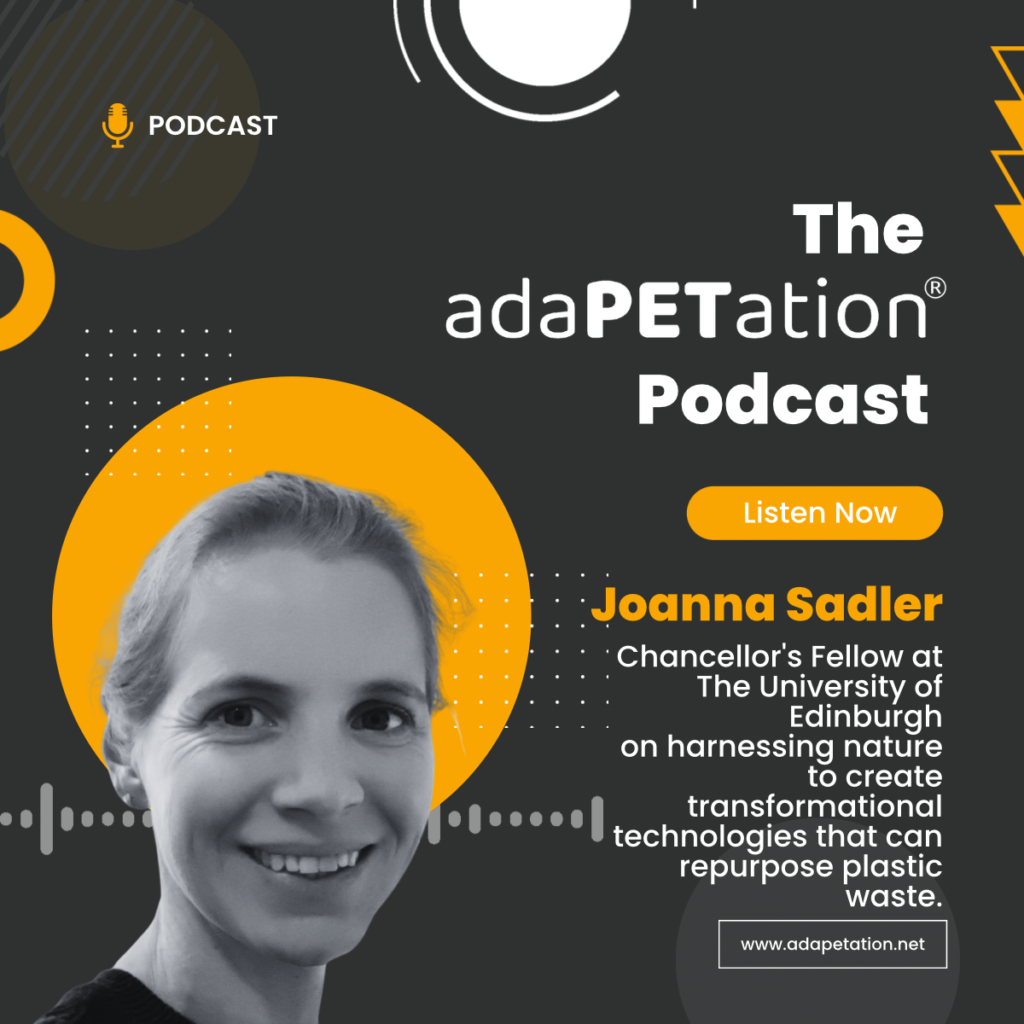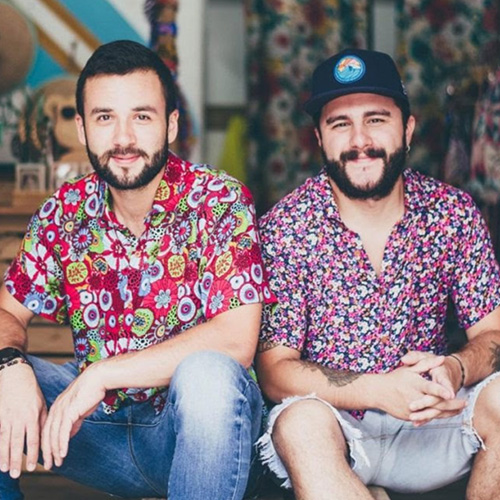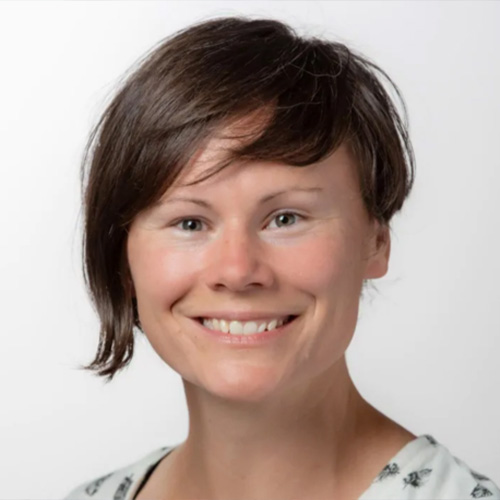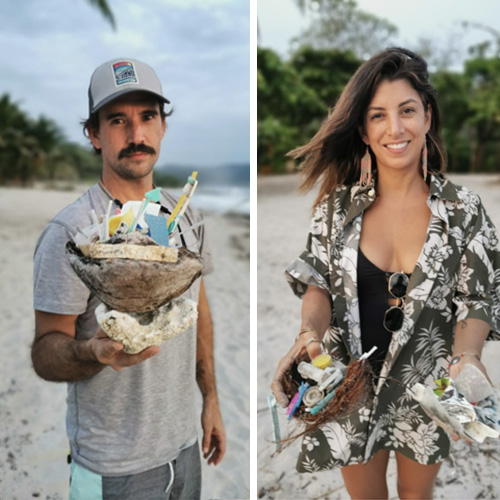
Dr. Joanna Sadler shares how biotechnology is transforming plastic waste into valuable resources. Discover how her cutting-edge research is helping create a circular economy and how collaboration can drive innovation toward a more sustainable future.
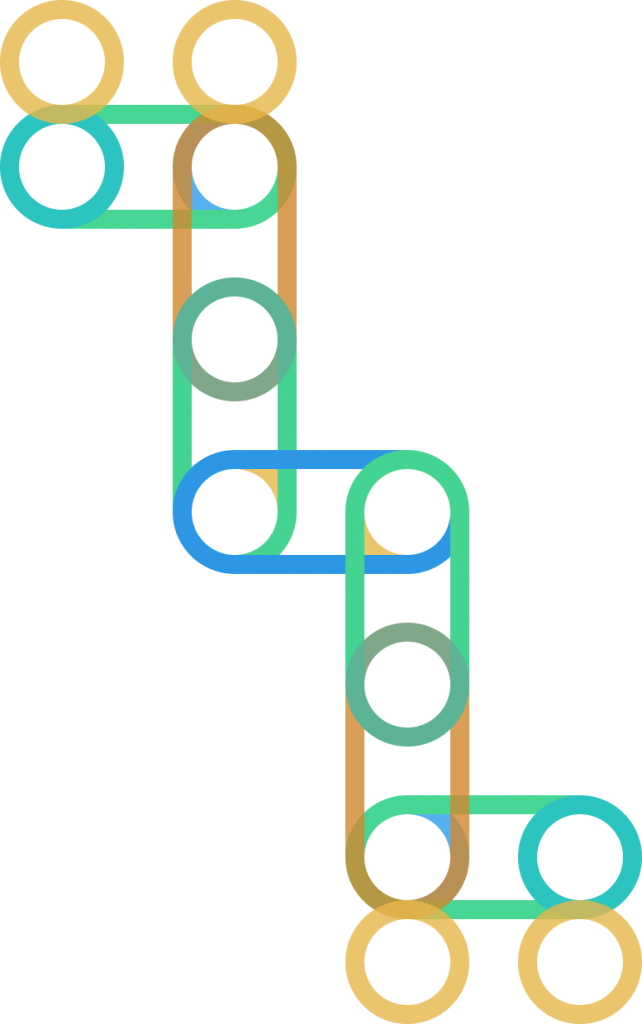
Unlocking the power of biotechnology in plastics: a conversation with Dr. Joanna Sadler
In the latest episode of the adaPETation® podcast, we delve into a fascinating discussion with Dr. Joanna Sadler, Chancellor’s Fellow in Biotechnology at the University of Edinburgh, who is pioneering efforts to bridge the gap between chemistry and biology to address one of the world’s most pressing environmental challenges: plastic waste.
As industries worldwide look for sustainable alternatives to fossil fuel-based materials, Sadler’s research at the University of Edinburgh offers groundbreaking insights into how biotechnology and other transformative technologies can play a critical role in creating a circular economy for plastics.
Learning from nature to innovate plastics
Sadler’s work centers around harnessing nature’s ability to break down plastics and repurpose them into valuable resources. With a background in chemistry, she transitioned to biotechnology in an effort to solve the problem of plastic waste at a molecular level.
“We have this really abundant waste source and… our current chemicals industry is totally reliant on petrochemicals. Can we plug the two together and… convert some of that waste plastic… into chemicals which are currently derived from petrochemicals?” Sadler explained. Her lab has developed biotechnologies that break down PET plastics into reusable materials, which could revolutionize how we manage plastic waste.
Transformative technology: paving the way to circularity
The global push toward circularity relies heavily on transformative technologies—the breakthroughs that are helping close the loop on plastic waste and reshaping the industry’s approach to sustainability. Sadler’s work is one example of this movement, as it merges biochemistry and molecular engineering to create new ways to recycle plastics at a fundamental level.
From advanced recycling technologies to Sadler’s biotechnology breakthroughs, these innovations offer hope for achieving full circularity. “We can actually take that [waste] and convert it into something else that has value,” Sadler remarked, showcasing the potential of new technologies to turn waste into resources. These technologies not only offer environmental benefits but also open up new economic opportunities for industries that produce waste.
By transforming polymers and plastics through innovative biochemical processes, Sadler’s research is part of a larger trend that holds immense promise for the future of circularity. Her work, along with other advancements in the field, presents a pathway to creating a regenerative system where plastic waste is eliminated, and materials are continually repurposed.
Scaling biotech solutions for plastics
One of the key challenges Sadler highlighted is the need to scale biotechnology processes to rival traditional petrochemical methods. While early-stage research has shown promising results, scaling up to a level where these methods can be commercially viable is a significant hurdle.
“[Biotech solutions] work very well for proof-of-concept studies, but it’s not great for scaling up… It becomes quite expensive,” Sadler noted. The complexity of purifying bio-based products, especially for food-grade applications like vanillin, remains a critical issue. Sadler’s team is collaborating with industrial partners to address these challenges, working to create scalable and efficient systems.
A shift in industry interest
Despite the challenges, Sadler is optimistic about the industry’s willingness to embrace sustainable practices. Chemical companies and plastic producers are increasingly seeking alternatives to fossil fuel feedstocks. Sadler described how “there is a real pull from end users for these technologies to work,” noting that industries are driven by both sustainability goals and the need for new, innovative solutions to manage their waste streams.
This is particularly exciting for companies that produce plastic-rich waste. “It’s providing them with another potential value stream… They could now get paid to provide [the waste] to another company who is able to upcycle it and use it as a feedstock,” she explained. This presents both environmental and economic benefits, showing how closed-loop systems could become the norm.
Envisioning a closed-loop future
Sadler’s vision for the future is one where plastic waste is minimiszed, and the materials we produce are part of a closed-loop system. “We need to… reduce the amount of plastic waste produced in the first place,” she said, emphasiszing the importance of sustainable design and lifecycle planning for products.
In Sadler’s ideal future, waste plastics would be depolymerized and repurposed in a way that nothing ends up in landfills, rivers, or oceans. “It becomes a tightly managed resource, much like how glass is managed at the moment,” she explained. This vision aligns closely with the goals of regenerative industries and circular economies, where waste becomes a resource rather than a burden.
The path forward: cooperation and innovation
For this future to become a reality, Sadler stressed the need for cooperation across industries. She suggested the creation of a “waste-mapping tool” to bring transparency and connectivity to industrial waste streams, helping innovators find solutions to problems that companies face with their byproducts. “We can actually take that [waste] and convert it into something else that has value,” she said, proposing a system where waste producers and solution providers collaborate more effectively.
The conversation ends with a powerful call to action for businesses: adopt whole-lifecycle thinking and plan for the end of life of products before they are even produced. Sadler urged industries to “[think] holistically… Talk to people who might be involved in the recycling about how easily [your product] can be recycled and disassembled.”
Listen to the full interview with Dr. Joanna Sadler
To hear more about Sadler’s groundbreaking work and her optimistic vision for the future of plastics can transform the PET industry, tune in to the latest episode of the adaPETation® podcast. Learn how biotechnology and transformative technologies could revolutionize the plastics industry and contribute to creating a truly circular economy.
LOOKING FOR MORE INSPIRATION?
The future of plastics is being redefined, and you can be a part of it. Listen to the full podcast with Dr Joanna Sadler to delve deep into the transformative technologies putting nature back into the picture. Your support can usher in a new era where plastic, once the problem, becomes an integral part of the solution.
Share it
Useful Links
THE HISTORY OF PLASTIC
Throughout the history of plastic, PET has been crucial in keeping food fresh with lightweight and durable packaging solutions that have helped reduce food waste for almost a century. Learn all about the invention of plastic and the important role it has played feeding people and saving the lives of humans and elephants in the adaPETation® timeline of the history of plastic.

